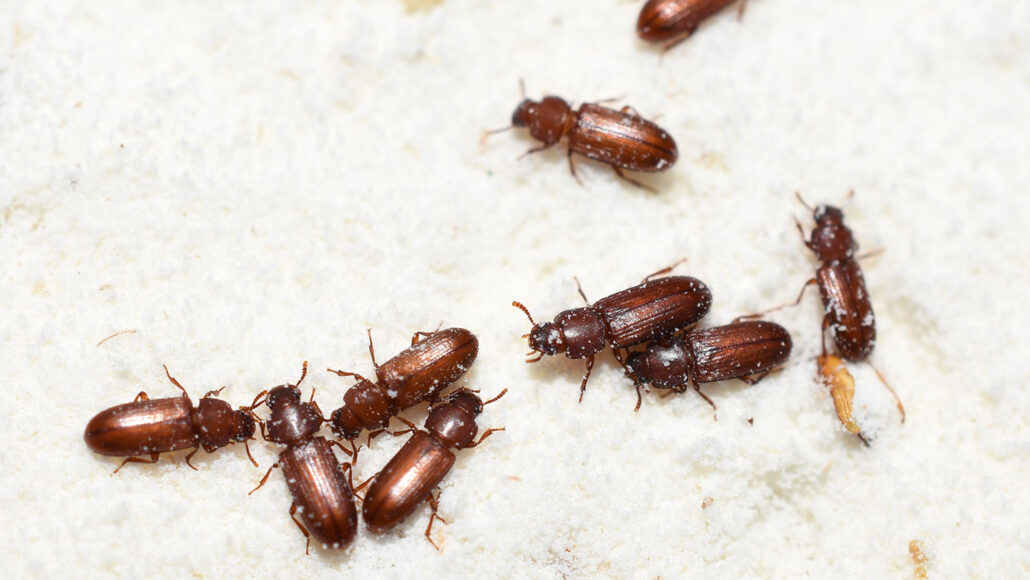These beetles ‘drink’ water using their butts
Red flour beetles use cells in their rear ends to suck water out of the air

Red flour beetles use special cells in their digestive tracts to suck water out of their poop and into their bodies.
HHelene/iStock/Getty Images Plus
By Freda Kreier
Some beetles can “drink” with their butts. Scientists are starting to understand how they do it.
When there’s water vapor in the air, red flour beetles open their anuses. The water vapor condenses on any poop in the insects’ lower gut. Then special cells lining the gut draw the water out of the poop and into the beetle’s body. Researchers reported how these cells work March 21 in Proceedings of the National Academy of Sciences.
Kenneth Halberg calls the trick an “amazing mechanism.” He led this research at the University of Copenhagen in Denmark. Halberg studies how hormones work in different insects. The new finding could help design new pesticides, he says. Such compounds could protect crops from beetles while keeping bees and other insects safe.
Insect pests destroy food and cost farmers money. These insects get into as much as one fifth of the global food supply every year. That’s according to the United Nations’ Food and Agriculture Organization. Beetles, including red flour beetles (Tribolium castaneum), are especially destructive. These insects can thrive in very dry places. That includes stored wheat and other bone-dry crops.
One way beetles survive is by recycling water out of their poop. But researchers didn’t know how the insects accomplished this.
Red flour beetles have a gene called Nha1. That gene is most active in cells in what’s called the rectal complex, Halberg’s team found. This organ is found near the end of the insect’s digestive system.
Scientists had suspected these cells help suck water from poop. But this was puzzling because “they don’t look like transporting cells,” says Michael O’Donnell. He works at McMaster University in Hamilton, Canada. He was not involved with the research but does study how insect bodies function.
The new study may help explain this puzzle.
Halberg’s team found that Nha1 can lead to a buildup of charged potassium particles, or ions, outside the cells. This buildup then triggers a process called osmosis. During osmosis, water will move toward areas with a high concentration of ions. So that pool of potassium could allow beetles to pull water through the wall of the rectal complex and into the rest of the body.
The researchers confirmed that the beetles opened their anuses in high humidity — times when there is more water vapor in the air. They also tried turning off the Nha1 gene to see what would happen. Beetles that lacked a working Nha1 gene didn’t survive as well in dry conditions as normal beetles.
It’s not clear whether other beetles use this type of system, Halberg says. But the finding suggests how “nature has its way of developing some quite interesting solutions to some very interesting problems.”







